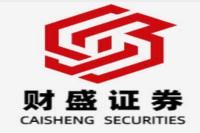Shenzhen's AI Ambitions: Becoming a Global AI Pioneer
Meta Description: Shenzhen's ambitious AI plan, funding, key areas, challenges and future outlook. Learn about China's AI development and investment strategies.
Have you ever looked at a city and thought, "Wow, they're really going places?" That's exactly how I feel about Shenzhen, a city already known for its technological prowess, now aggressively staking its claim as a global leader in Artificial Intelligence (AI). Their recent announcement of a massive investment plan – a cool 300 million yuan annually – isn't just throwing money at the problem; it's a meticulously crafted strategy aimed at establishing Shenzhen as an undisputed AI powerhouse. Forget incremental improvements; this is a bold, ambitious leap forward, a moonshot for AI innovation. We're not just talking about incremental progress here, folks – this is a full-blown sprint to the finish line! This isn't just about building better algorithms; it's about fundamentally reshaping the future of technology, and Shenzhen is inviting the world to witness its transformation. This deep dive explores the intricacies of Shenzhen's AI strategy, examining its potential impact on the global AI landscape, the challenges it faces, and the exciting possibilities that lie ahead. Buckle up, because this is going to be a wild ride! We'll delve into the specifics of their funding model, the key areas they're focusing on, and the potential ripple effects this could have on the broader technological ecosystem. Get ready to uncover the secrets behind Shenzhen's ambitious AI vision! This isn't just another tech story; it's a glimpse into the future, and Shenzhen is leading the charge.
Shenzhen's AI Funding: A 300 Million Yuan Commitment
Shenzhen’s commitment to becoming an AI pioneer is evident in its significant financial investment. The city plans to allocate up to 300 million yuan annually to fuel its AI ambitions. This isn't just a token gesture; it's a serious investment designed to attract top talent, foster cutting-edge research, and drive the development of groundbreaking technologies. This substantial funding is strategically allocated across multiple levels, ensuring a holistic approach to AI development. The breakdown reflects a clear understanding of the various stages needed to build a robust AI ecosystem.
-
Basic Research (基础研究): A substantial portion is dedicated to fundamental AI research, covering areas like mathematical principles, core algorithms, and foundational infrastructure. This long-term vision aims to build a strong base for future innovations, ensuring that Shenzhen isn't merely a consumer of AI technology but also a significant contributor to its advancement. Think of this as building the engine before designing the car.
-
Targeted Projects (重点项目): Significant funding is earmarked for specific projects in high-impact areas like embodied intelligence (think robots capable of interacting with the real world), autonomous driving, and AI chip development. These targeted investments ensure that Shenzhen is not only conducting fundamental research but also translating that research into tangible, impactful applications.
-
Grant Structure: The funding model is tiered to encourage a broad range of research projects. Major projects can receive up to 10 million yuan, significant projects up to 3 million yuan, and general projects up to 600,000 yuan. This tiered approach ensures that both large-scale and smaller, innovative projects receive the support they need to thrive. This balanced approach fosters a diverse and dynamic research environment, maximizing the potential for breakthroughs.
-
"Jiebang Guashuai" (揭榜挂帅) Projects: This unique approach, often translated as "open bidding," allows researchers to compete for funding by submitting proposals for specific technological challenges. This competitive model fosters innovation and ensures that the most promising projects receive the necessary resources. It's a dynamic system that encourages risk-taking and rewards excellence. The city will match up to 50% of the project investment costs, with a maximum of 30 million yuan per project. This significant leveraging of private investment underscores the city's commitment to fostering a dynamic public-private partnership in AI development.
Key Areas of Focus: Embodied Intelligence, Autonomous Driving, and More
Shenzhen's AI strategy isn't a scattergun approach; it's laser-focused on key areas crucial for future technological leadership. This focused strategy allows for a more efficient allocation of resources and a higher likelihood of achieving significant breakthroughs. The city isn't just investing in any AI; it's strategically positioning itself at the forefront of several pivotal technologies.
-
Embodied Intelligence (具身智能): This area is at the cutting edge of AI research, focusing on creating AI systems that can interact with and manipulate the physical world. Think robots capable of performing complex tasks in real-world settings. This isn't just about software; it's about integrating AI into physical systems, opening up a world of possibilities in manufacturing, logistics, and beyond.
-
Autonomous Driving (自动驾驶): Self-driving vehicles are no longer a futuristic fantasy; they're rapidly becoming a reality. Shenzhen's investment in this area is a strategic move to become a leader in this rapidly growing sector. This focus encompasses not just the algorithms but also the infrastructure and regulatory frameworks needed to support the widespread adoption of autonomous vehicles.
-
AI Chips (人工智能芯片): The heart of any AI system is its hardware. Shenzhen's investment in AI chip development is a critical step towards achieving technological independence and ensuring a competitive edge in the global AI landscape. This focus is essential for ensuring that Shenzhen has the processing power needed to support its ambitious AI goals.
Challenges and Opportunities: Navigating the Path to AI Leadership
While Shenzhen's ambitious plan is commendable, it's not without its challenges. The road to becoming a global AI leader is paved with complexities.
-
Talent Acquisition: Attracting and retaining top AI talent is crucial, and competition is fierce globally. Shenzhen needs to offer competitive salaries, research opportunities, and a conducive living environment to attract the best minds. This requires a holistic approach that goes beyond financial incentives and addresses issues like work-life balance and career development.
-
Data Privacy and Security: The explosive growth of AI necessitates robust data privacy and security measures. Shenzhen needs to strike a delicate balance between promoting AI development and safeguarding citizens' data rights. Transparent data governance policies and strong cybersecurity infrastructure are essential to build trust and confidence.
-
International Collaboration: AI is a global endeavor. Shenzhen's success will depend on its ability to collaborate effectively with international research institutions and companies. Openness to international partnerships is crucial for accessing diverse perspectives and expanding the city's AI ecosystem.
Despite these challenges, the opportunities are immense. Shenzhen's strategic location, robust technological infrastructure, and supportive government policies position it ideally to become a global AI leader. Its commitment to fostering innovation, attracting talent, and investing heavily in AI research positions it for significant growth in the years to come.
Frequently Asked Questions (FAQ)
Q1: What is the main goal of Shenzhen's AI initiative?
A1: The main goal is to establish Shenzhen as a leading global center for AI innovation and development. This involves significant investments in research, development, and talent acquisition to drive breakthroughs in key areas like embodied intelligence, autonomous driving, and AI chips.
Q2: How much funding is allocated to this initiative?
A2: Shenzhen plans to invest up to 300 million yuan annually in its AI development efforts. This funding is allocated across various research projects and initiatives.
Q3: What are the key areas of focus for this funding?
A3: Key areas include fundamental AI research, embodied intelligence, autonomous driving, and AI chip development. This targeted approach aims to ensure advancements across the entire AI ecosystem.
Q4: What challenges does Shenzhen face in achieving its AI goals?
A4: Challenges include attracting and retaining top talent, ensuring data privacy and security, and fostering international collaborations. These are all crucial aspects of building a successful and sustainable AI ecosystem.
Q5: What are the potential benefits of Shenzhen's AI initiative?
A5: Success could lead to significant economic growth, technological advancements, and the establishment of Shenzhen as a global AI leader, attracting further investment and talent.
Q6: How does the "Jiebang Guashuai" (揭榜挂帅) system work?
A6: This system, often translated as "open bidding," allows researchers to compete for funding by submitting proposals for specific technological challenges. This competitive model fosters innovation and ensures that the most promising projects receive the necessary resources.
Conclusion: Shenzhen's AI Future Looks Bright
Shenzhen's ambitious plan to become an AI pioneer is audacious but achievable. The city's strategic investments, focused approach, and commitment to fostering innovation position it well for success in the global AI race. While challenges remain, the potential rewards are immense, promising significant economic growth and technological advancements for the city and its citizens. This isn't just about building a better AI; it's about building a better future. Shenzhen's journey is a compelling case study for other cities and nations aspiring to become leaders in the age of artificial intelligence. The coming years will be exciting to watch as this bold vision unfolds.



